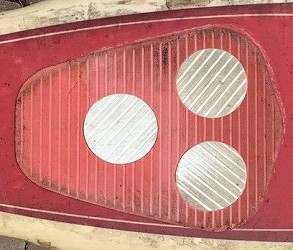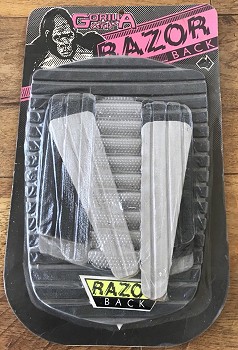
surfresearch.com.au
glossary
: d
| home | catalogue | history | references | appendix |
 |
surfresearch.com.au
glossary
: d
|
|
|
|
|
|
|
|
|
|
|
|
|
|
|
|
|
|
|
|
|
|
|
|
|
|
|
|
| deck grip –
synthetic
rubber non-slip mat glued to the deck, usually at
the tail, as a substitute for wax. First commercial product (probably) was AstroDeck by Herbie Fletcher (USA) circa 1976. The first Australian product was probably the Dial-pad by Gorilla Grip, circa 1982.  Adhesive Deck Grip: Gorrilla Dial Pad, 1986 |
 Adhesive Deck Grip:
Gorrilla Razor Back, 1988.
|
|
Drag
Shute
[parachute legrope] Advertisement, right: The Tracker Drag Shute New product review by Craig Leggat. Tracks n68, May 1976, page 31. Far right: Drag
Shute printed package.
. Images kindly forwarded by Ray Henderson, January 20016. . |
 |
 |
 |
Left: Drag Shute package. Right:
.Tracker Drag Shute. |
 |

|
|
|
|
|
|
|
|
|
|
|
|
|
|
|
|
|
|
|
|
|
|
|
|
|
|
|
| home | catalogue | history | references | appendix |